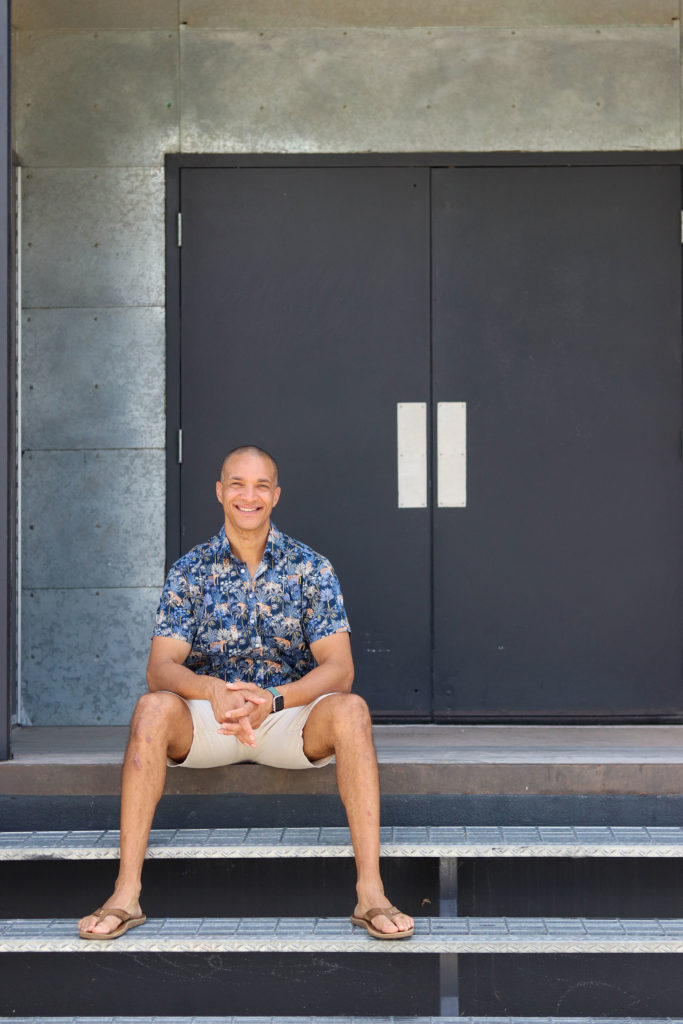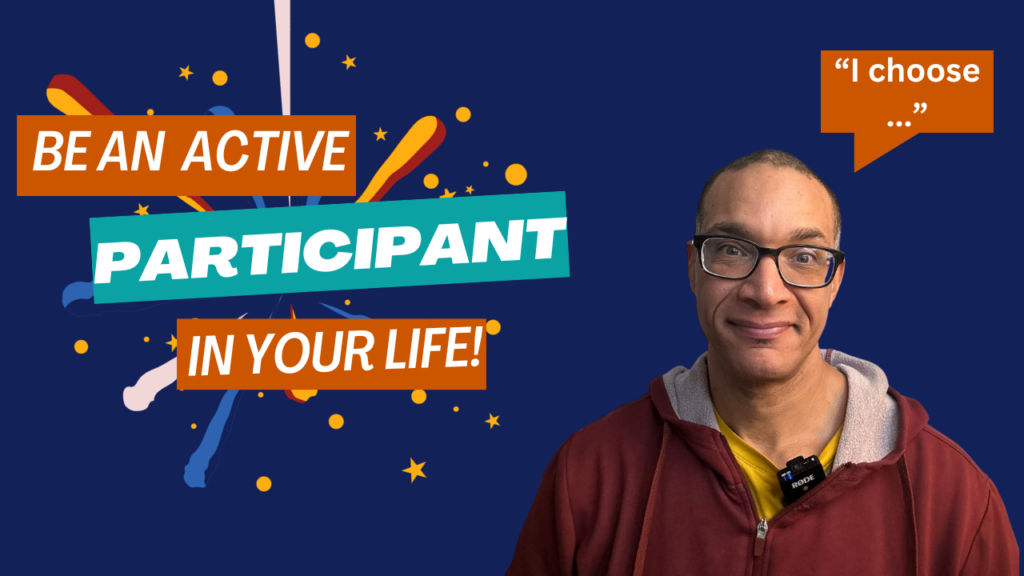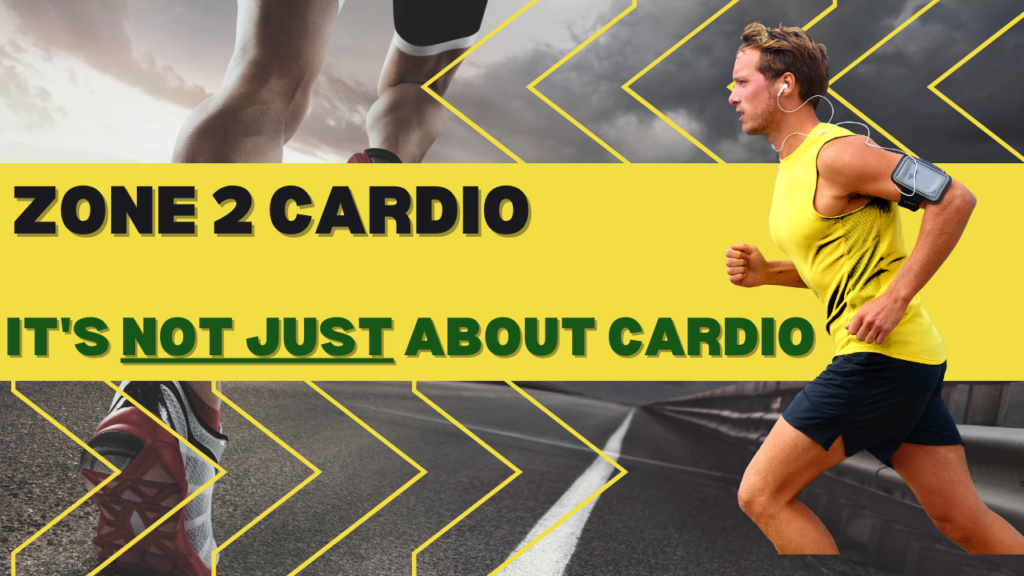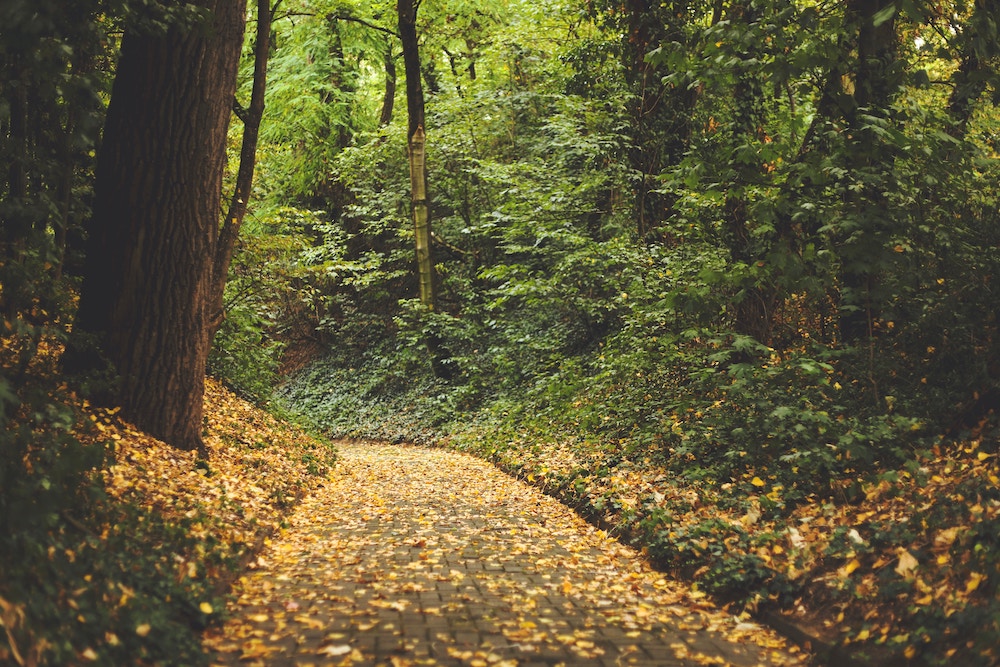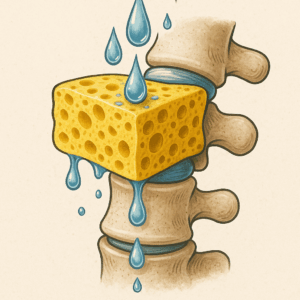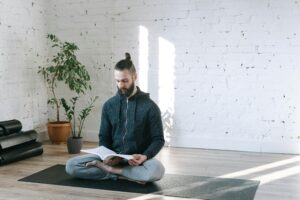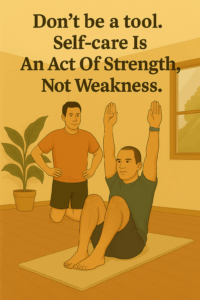Trying to live your life with plantar fasciitis is not fun. And it’s especially not fun when you look for plantar fasciitis exercises and plantar fasciitis treatments, and they don’t help and, a lot of the time make it worse. Check out this video on how to overcome Plantar Fasciitis and reclaim your mobility, which will cover the main cause of plantar fasciitis, what is traditionally done, and the best way to overcome it.
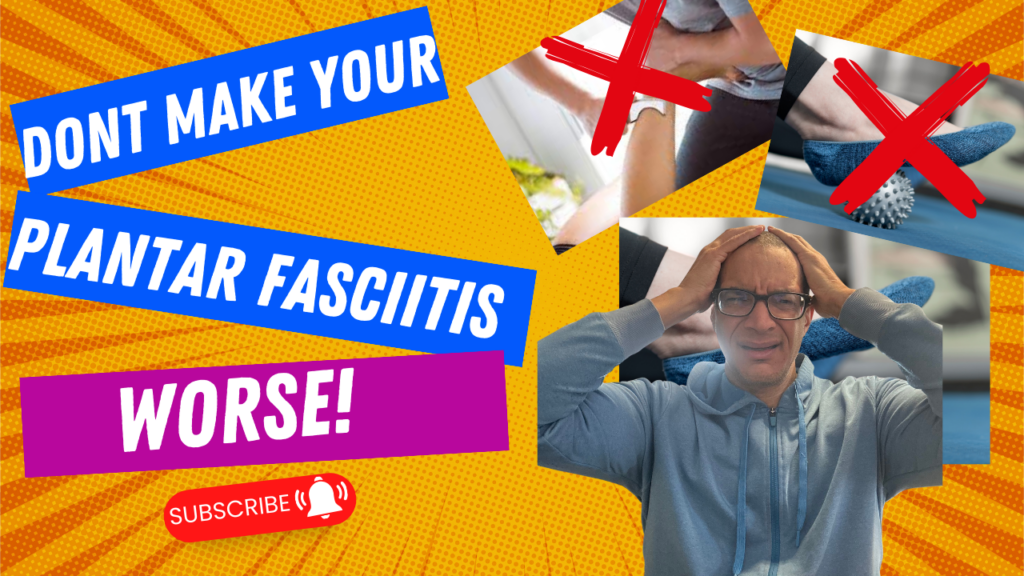
Plantar fasciitis is a pain in the foot, literally the foot. It’s a sticking in the inflammation process of the different soft tissue layers in your feet, causing a lot of bottom of your foot pain and towards your heel pain. I’ve heard of some cases taken up to a year to get rid of, and some people always still have it around. But, that’s because the approach that most people take to correct these things isn’t totally the best thing to do.
So, I want you stay tuned. We’re going to talk about the best way to look at how to train and treat your plantar fasciitis. Greetings I’m Ekemba Sooh. I’m the owner of Solcore Fitness. It’s a therapy and fitness company. I’ve been in this field for almost 30 years. So I’m a therapist and trainer, which if you haven’t heard, it’s like a physical therapist but much more detailed, and it’s underneath the osteopathic discipline of which I’ve been studying for quite a while now.
I’ve had quite a bit of success treating plantar fasciitis. It’s because I took a holistic method on it to where prior to that, people took a allopathic, symptom-related type treatment or excess protocol, and that’s not the best. So, I’m going to talk about the holistic approach and that’s what I talk about on this channel is a holistic approach and etiology, the cause. I want to treat the cause, not the symptom. So you want to hear more about this holistic cause-based system, then subscribe to the channel. If you like this video, give a thumbs up and don’t forget to share with your friends.
As I said at the beginning, plantar fasciitis, a inflammation process in your layers of soft tissue and fascia and feet, and a lack of sliding process. They get stuck. Because of this, you get pain. So I don’t have flow, like I’m pinching a tube, then that pressure builds and if my tissue, which should slide upon each other, it should slide, becomes stuck, but I try and move that also develops more inflammation process.
This inflammation, like all inflammation, leads to pain and this is especially damaging to plantar fasciitis, because you got to walk. So whenever you walk, you keep pissing it off and keeping it worse. These layers of soft tissue I keep talking about are a lot in your feet. So, at your feet, you have three layers of fascia on your feet, as you can see with these pictures I’m going to be putting up. You have a top layer that goes left to right or right to left. You have a bottom part which goes front to back. You have a middle layer which goes front to back, but also a bunch of different directions. These three layers should slide upon each other. They should move.
All soft tissue, and if you eviscerate your organs, should slide on a watery substance, fascia liquid. So it should move, it should be even. The problem is that when it gets stuck, and that’s where plantar fasciitis comes in. These three layers of fascia attach though to the back of your leg, namely your Achilles tendon. Your Achilles tendon also has a bunch of different layers. The two main layers we’re going to talk about today are the layer to your soleus and your gastroc, your calves.
But not the muscles, the fascia that surrounds these muscles, because it’s the fascia that surrounds these muscles that connect to the plantar fascia, and then connect up to your hamstrings, namely your bicep femoris, which is your outside hamstring. Again, the fascia of the bicep, and then that goes up to your [inaudible 00:03:17], your butt, which goes up to your back, up to your head, out to your arms.
This is what I’m talking about, a holistic approach is not just a plantar. Sure, you have pain in the plantar, but where in that chain do you also have issues that can be contributing to the plantar? So you don’t have to be a genius to understand that a plantar fasciitis is a lack of sliding on the soft tissue and lack of flow. You need to restore the sliding process and restore the flow.
So sliding process, obviously, you need those different layers of fascia and muscle to slide upon each other. When I say decrease the flow, I’m mainly talking about the flow of liquid through your fascia. Your fascia has little collagen tubes, little things that go through it. It is not inert, it’s a living tissue. It’s very, very important and it’s a big focus on how I work with people. So you have to increase that flow within that tube, because that flow brings nutrients to that area, takes away waste and helps keep you everything nice and smooth.
Current techniques to treat plantar fasciitis are Graston technique or aggressive technique like that. Some sort of myofascial release, either with a ball or a roller or by hand, heat and stem, strengthening or stretching. What else is there? I think I’m missing something. But, these techniques fall short because mainly, they’re not addressing the body holistically. They’re focusing on just the symptom, just the foot, just what’s happening, and that’s not how the body works. The body is interdependent, interconnected, and part of the reason people have pathologies is because your body’s lost the ability to do this.
So, if you go to try and find treatment for your plantar fasciitis and that person wants to do Graston technique, run the other way. I wouldn’t wish Graston on my worst enemy and I would never, ever do to my body. It is way too traumatic to the body. Graston is a medieval-looking piece of metal that they push into your tissue and scrape it up and down, like they trying and peel paint off the wall. I’m not quite sure why they do that, but it gives you the opposite effect of what you want.
If the goal is to increase the sliding process and the flow of liquid through these fascial collagen tubes, well, then pushing a piece of metal that smushes the tissue down and crushes the tubes is the exact opposite thing you want to do. My most current case of plantar fasciitis, she did that first at a physiotherapist. That made things a hundred times worse. It wasn’t until we took this holistic approach that she got better.
Now, if you go do myofascial release, it’s not as aggressive, but it’s very similar to the outcomes you get from Graston, just not as traumatic, especially if you’re using some sort of tool. So I see people roll their foot on a ball, a little ball, with pokey things on it, or on top of a roller. They’re doing it, because they’re trying to treat the symptom, which is the pain in their foot. Maybe it works, maybe it doesn’t. I don’t know. Sometimes if people feel relief, that’s great, but it’s not going to correct anything, because again, you didn’t increase the flow, you didn’t increase the sliding process, and you traumatized the tissue.
Heat and stem, heat, I mean, I guess it’s okay. It brings some liquid, some heat to the area, but it doesn’t work with the sliding process, it doesn’t work holistically. A waste of time for me. And cold icing should only be done for the first 12 to twenty-four hours of having an injury, never afterwards because cold stops the inflammation process, which will make you feel no pain, because you’re on ice. But then it stops the good inflammation. Inflammation is your first line of defense to heal your body or to correct some sort of virus. Now, if I’m stopping that process, then I’m stopping the process of healing.
There’s other forms, like acupuncture, which I’m not acupuncturist, I don’t know the techniques, but, in terms of increase in flow and energy through the body, sounds fantastic, sounds like something you should do, but you need to do it with an exercise protocol and treatment protocol to help increase the chain that I keep talking about.
Have you had or have plantar fasciitis? What treatments have you tried? Have they worked? Have they not worked? I’d love to know. Put them in the comments and then stay tuned for how I approach plantar fasciitis. So how have I found success working with plantar fasciitis? I’m going to tell you here in a little bit, but I’m going to give you a little asterisk here. First and foremost, this is not a prescriptive thing for you to follow at all. This is not me showing you a bunch of exercises and things to do, and then you go on home follow them. Because you’re not just, you’re however many people are watching this video, and each person has a different body which each person would need to be addressed specifically.
Two, each one of these things I’m going to go through needs to be taught with factors of progression. When you exercise, you’re retraining the body, you’re retraining the body, because the soft tissue always wins and so you want to tell it to do something different. Well, each person needs to be taught a little bit differently on how to do each one, because each person has different areas that are smart and not smart, to be general. So I can’t give you an outline to follow, sorry, but not really sorry.
So, the first thing I do with people is I give them exercises. I give them holistic exercises. I give them holistic stretches, which is called myofascial stretching. The myofascial stretching is stretching not just the muscle but the fascia and the fascia, which connects the whole body. I first give them the soleus and the gastroc, because as you remember at the beginning of this video, I talked about how the soleus, muscle soleus and your gastroc, your calf muscles, are part of your Achilles tendon, which go down into your foot, which connect to those three layers of plantar fasciitis.
So when I give them these stretches, most people, just by these two stretches, get, I don’t know, 50, 67% relief just for these two stretches. But I don’t stop there because, again, I’m addressing the body holistically and because it was gastroc and soleus don’t stop at your knee, they attach the back of your thigh, to your hamstrings, namely your bicep femoris. So I give them a mild fascia stretch for the bicep femoris. Usually it’s pretty good, but because that chain goes up to the head and out to the arm, I maybe give them stretches for their glute max deep and superficial, for the latissimus dorsi, for the transverse spinalis. All that can be part of your chain for your plantar fasciitis.
As they’re doing that, because that’s the most important part is to always do homework, to retrain the body, I also give them therapy. Therapy includes, like I said at the beginning, working with those three layers of fascia in your feet. That’s the most important part. I want to unstick and increase the flow of those three layers of fascia. It feels really good when you get it done right. I work with those three layers and I can tell once it was released, boom, but now I work up the body. I want to work with that fascia of your lower leg, which is naming your fascia curies, up to your leg, your thigh fascia, maybe even your IT band, all the way up to your body.
By doing these general protocols, I get a lot of success, but there’s some things that derail that success, I want you to listen. So when somebody comes into me and they have plantar fasciitis, the first thing I say to them, and the pun is definitely intended here, is that you’re going to literally take two steps forward and one steps back in terms of your progress. Because, after I give you that treatment I just talked about and I give you the exercises, as soon as you step off the table or start to leave my studio, you’re ruining the progress, because you’re stepping on the ground and you’re decreasing all that flow and movement that I talked about.
You got to walk around, so it’s not that you can flow, but that’s going to set you back. Being overweight is literally going to, again, excuse the pun, crush the fascia, because now you have excess weight that’s pushing harder down on your feet, that even just standing or moving around, you’re putting more pressure, putting more, pushing the tissue more together, crushing the tubes more. The footwear people wear really screws up plantar fasciitis.
And the big shoes people wear now, these big Hoka-looking things, actually aren’t good for correcting plantar fasciitis. If you got to wear them, if you have to wear them because your feet hurt, then you got to wear them. But if the goal is to increase that movement and increase that flow, then putting a gigantic padding where nothing moves, it’s not going to help it. Again, if you’ve got to do it, because you have pain, do it. But, you need to find a way to let your feet move.
Your feet, all those joints and ligaments and muscle in your feet should move and have a job. The more I take myself away from being barefoot, the less my feet do their job. So you need to find some way to slowly let your feet move more, therapy and exercise help, but you also have to do some good movement patterns. Having bad movement patterns also, like I said, increases plantar fasciitis, because your body doesn’t move well, having bad posture, and having not a lot of muscle.
So I said before, to stretch a muscle, you need a muscle. And so, especially with an ectomorph or anybody who doesn’t have muscle tissue in these areas you need to work, you need to also do some strengthening. But don’t just jump in and start doing calf raises. Like I said, well, I don’t know if I said it, but your calf, I didn’t say it, your calf splits in two. So this is a big thing here. Your calf splits in two to go different direction. It bifurcates. So we see these calf stretching of keeping the foot in one position. That’s not correct. It needs to turn out toward the inside calf or turn in toward the outside calf.
The soleus is straight. So you can see you have three different directions you need to move your foot to work three different muscles. You need to work your upper body wherever you need muscle, your bicep femoris, your latissimus, it doesn’t matter. You need to have that muscle so you can properly stretch it. This is how you want to approach the body, not just with plantar fasciitis with anything, and not just for pathologies. Even if you’re just looking to strengthen your body better and get more mobile, you have to take this approach because the exercises and things you do for your body keep you functioning.
If it keeps you functioning, it means it keeps you away from dysfunction, which is pain and mobility. But it also can take you further into higher functioning, exact same exercises. So all those exercises I told you for plantar fasciitis will take you away from plantar fasciitis, but also towards a really functioning plantar fasciitis, calf, hamstring functioning. You get stronger, get more mobile as you keep doing the exact same exercises.
So, if you liked what you heard, if you want to hear more, and I got some options for you, I’ve got a free Facebook group. So in the description below, I put a link to my free Facebook group, and it’s a more interactive group to where I talk about master classes and I do interactive challenges where I show you things too. And I do mini trainings and just interaction with the group. So just click on a link, answer some questions, agree to the terms, you’re in.
If you don’t want to participate in that, then you can have a free ebook. It’s on how to get mobile, get less pain, and live a life of your dreams. It’s four steps. Again, in the description, click on it, put your name and information there, you get instant access. Or, if you’re ready to talk more about how this program can help you, then use the link in the description to schedule a time to book with me. We can talk about what you’re doing, what’s your sticking points, and how it can help. And I’ll only bring up my services if I feel you’re a good fit, no other time.
Please, if you like this video, please share with your friends. Please give it a thumbs up, that tells the algorithm, “Hey, this is good,” and then more people who like it will see it. Please don’t forget to subscribe and then I’ll see you next week. Take care.
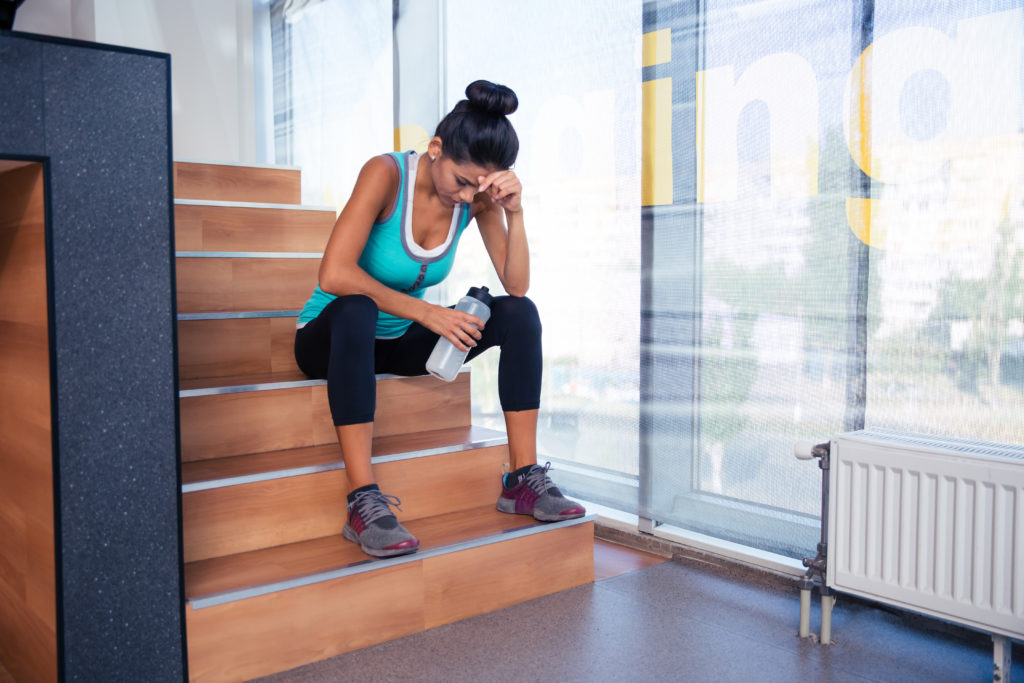
MOVE BETTER, REDUCE PAIN, AND LIVE LIFE ON YOUR TERMS
it’s not just working out, it’s building a foundation for a better life.
Find out more @
